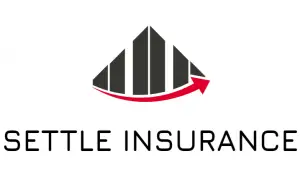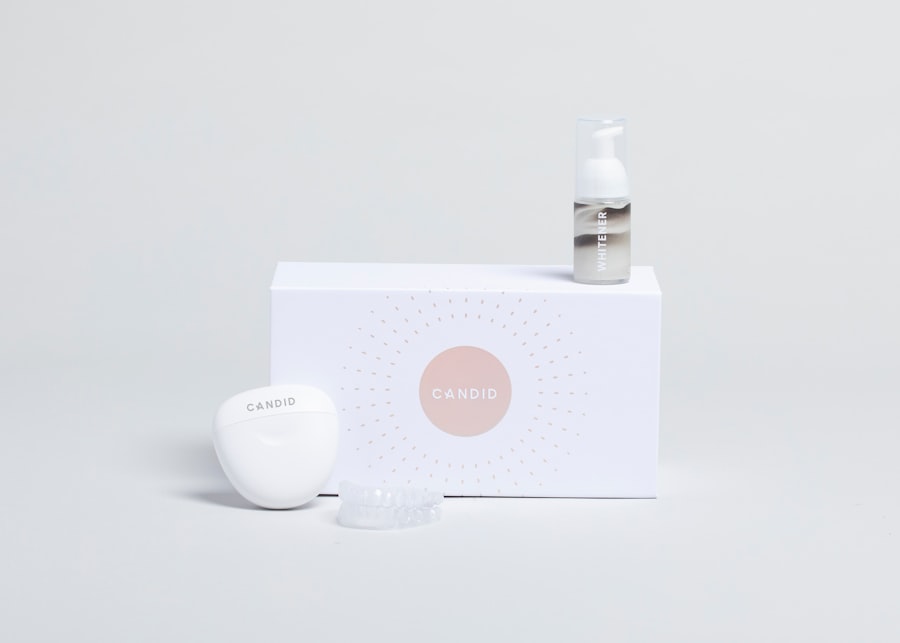“This post may contain affiliate links, if you click a link we may earn a commission if you purchase from that merchant.”
Dental insurance coverage is an important consideration when it comes to Invisalign treatment. Invisalign is a popular alternative to traditional braces, offering a discreet and convenient way to straighten teeth. However, the cost of Invisalign treatment can be a significant investment. That’s where dental insurance comes in. Dental insurance coverage can help offset the cost of Invisalign treatment, making it more affordable for individuals and families. In this article, we will explore the various aspects of dental insurance coverage for Invisalign treatment and provide tips on how to maximize your benefits.
Table of Contents
Key Takeaways
- Understanding your dental insurance coverage for Invisalign treatment is crucial before starting the treatment.
- Maximizing your dental insurance benefits for Invisalign treatment can help reduce out-of-pocket costs.
- Oral health plays a significant role in Invisalign treatment coverage, and maintaining good oral hygiene is essential.
- Preventative care is covered by most dental insurance plans and can help prevent the need for more extensive Invisalign treatment.
- Invisalign treatment is considered orthodontic treatment and is typically covered by dental insurance plans that include orthodontic coverage.
Understanding Your Dental Insurance Coverage for Invisalign Treatment
When it comes to dental insurance coverage for Invisalign treatment, it’s important to understand how it works. Dental insurance plans typically have specific coverage for orthodontic treatment, which includes Invisalign. However, it’s important to note that not all dental insurance plans cover orthodontic treatment, so it’s essential to review your plan’s coverage details.
In general, dental insurance coverage for Invisalign treatment works by providing a percentage of coverage for the cost of treatment. This percentage can vary depending on your specific plan and the terms outlined in your policy. It’s also important to note that dental insurance plans often have a lifetime maximum benefit for orthodontic treatment, which means there is a limit to how much they will pay towards the cost of Invisalign.
Additionally, dental insurance plans may have certain limitations and exclusions when it comes to Invisalign treatment. For example, some plans may require pre-authorization or a waiting period before coverage kicks in. It’s important to review your plan’s terms and conditions to understand any limitations or exclusions that may apply.
Maximizing Your Dental Insurance Benefits for Invisalign Treatment
To maximize your dental insurance benefits for Invisalign treatment, there are a few tips you can follow. First, make sure to choose a dental insurance plan that offers coverage for orthodontic treatment, including Invisalign. Compare different plans and their coverage details to find the best option for your needs.
Another way to maximize your benefits is to use a flexible spending account (FSA) or health savings account (HSA) for Invisalign treatment. These accounts allow you to set aside pre-tax dollars to use towards eligible medical expenses, including orthodontic treatment. By using these accounts, you can save money on the cost of Invisalign treatment.
It’s also important to stay within your plan’s network of providers. Many dental insurance plans have a network of preferred providers who have agreed to provide services at discounted rates. By choosing an in-network provider for your Invisalign treatment, you can maximize your benefits and potentially save money.
The Importance of Oral Health in Invisalign Treatment Coverage
Oral health plays a crucial role in Invisalign treatment coverage. Before approving coverage for Invisalign, dental insurance providers typically evaluate the oral health of the patient. This evaluation helps determine if the patient is a suitable candidate for Invisalign treatment and if any additional dental work is needed before starting treatment.
In general, dental insurance providers look for good oral hygiene practices, healthy gums, and minimal tooth decay or cavities. If a patient has significant oral health issues, such as gum disease or extensive tooth decay, they may be required to address these issues before starting Invisalign treatment. This ensures that the patient’s oral health is in good condition before undergoing orthodontic treatment.
It’s important to note that dental insurance providers may not cover the cost of any additional dental work that is needed before starting Invisalign treatment. This includes procedures such as deep cleanings, fillings, or extractions. It’s essential to review your plan’s coverage details and discuss any potential out-of-pocket costs with your dental provider.
Preventative Care and Invisalign: How Your Dental Insurance Can Help
Preventative care is an essential aspect of maintaining good oral health, and it also plays a role in Invisalign treatment coverage. Dental insurance providers often cover preventative care services, such as regular cleanings and exams, at little to no cost to the patient. These services help prevent oral health issues and ensure that the patient’s teeth and gums are in good condition before starting Invisalign treatment.
By taking advantage of your dental insurance’s coverage for preventative care, you can ensure that your oral health is in optimal condition before starting Invisalign treatment. Regular cleanings and exams can help identify any potential issues that may need to be addressed before starting treatment, such as cavities or gum disease.
It’s important to note that dental insurance providers may have specific guidelines for preventative care coverage in relation to Invisalign treatment. For example, they may require a certain number of cleanings per year or specific documentation from your dental provider. It’s essential to review your plan’s coverage details and follow any guidelines or requirements to maximize your benefits.
Orthodontics and Invisalign: What Your Dental Insurance Covers
Orthodontic treatment, including Invisalign, is typically covered by dental insurance plans that offer orthodontic coverage. However, it’s important to understand what your dental insurance covers when it comes to orthodontics and Invisalign.
Dental insurance plans often provide a percentage of coverage for orthodontic treatment, which includes Invisalign. This percentage can vary depending on your specific plan and the terms outlined in your policy. It’s important to review your plan’s coverage details to understand how much they will pay towards the cost of Invisalign treatment.
Additionally, dental insurance plans may have a lifetime maximum benefit for orthodontic treatment. This means there is a limit to how much they will pay towards the cost of Invisalign. It’s important to review your plan’s terms and conditions to understand any limitations or exclusions that may apply.
Invisalign and Teeth Whitening: Can Your Dental Insurance Help?
Teeth whitening is a popular cosmetic dental procedure that many individuals consider in conjunction with Invisalign treatment. While dental insurance plans typically do not cover the cost of teeth whitening for purely cosmetic purposes, there may be some instances where dental insurance can help.
In some cases, dental insurance providers may cover the cost of teeth whitening if it is deemed medically necessary. For example, if a patient has severe tooth discoloration due to a medical condition or medication, dental insurance may provide coverage for teeth whitening as part of the overall treatment plan.
It’s important to note that coverage for teeth whitening varies by dental insurance plan and is subject to specific guidelines and requirements. It’s essential to review your plan’s coverage details and discuss any potential coverage with your dental provider.
Exploring Your Dental Insurance Options for Invisalign Treatment
When it comes to dental insurance options for Invisalign treatment coverage, there are several options to consider. The first option is to explore dental insurance plans offered through your employer. Many employers offer dental insurance as part of their benefits package, which may include coverage for orthodontic treatment, including Invisalign.
If you do not have access to dental insurance through your employer, you can also explore individual dental insurance plans. These plans are available for purchase directly from insurance providers and offer coverage for a range of dental services, including orthodontic treatment.
When comparing dental insurance options for Invisalign treatment coverage, it’s important to consider factors such as coverage details, network providers, and cost. Review the coverage details of each plan to ensure that it includes orthodontic treatment, including Invisalign. Additionally, consider the network of providers and choose a plan that includes providers in your area. Finally, compare the cost of each plan, including monthly premiums, deductibles, and out-of-pocket costs.
Tips for Navigating Invisalign Coverage with Your Dental Insurance
Navigating Invisalign coverage with your dental insurance provider can sometimes be a complex process. However, there are a few tips you can follow to make the process smoother. First, make sure to thoroughly review your dental insurance plan’s coverage details and any limitations or exclusions that may apply to Invisalign treatment.
Next, communicate effectively with your dental insurance provider. If you have any questions or concerns about your coverage, reach out to your provider for clarification. It’s important to understand what is covered and what is not covered before starting Invisalign treatment.
When communicating with your dental insurance provider, be prepared to provide any necessary documentation or information they may require. This may include treatment plans from your dental provider or any other supporting documentation. By being prepared and organized, you can help streamline the coverage process.
Common Questions About Invisalign Coverage and Dental Insurance
There are several common questions that individuals have about Invisalign coverage and dental insurance. Here are answers to some of these questions:
1. Does dental insurance cover Invisalign treatment?
– Dental insurance plans that offer orthodontic coverage typically cover Invisalign treatment. However, it’s important to review your plan’s coverage details to understand how much they will pay towards the cost of treatment.
2. How much does dental insurance typically cover for Invisalign treatment?
– The amount that dental insurance covers for Invisalign treatment varies depending on your specific plan. It’s important to review your plan’s coverage details to understand the percentage of coverage they provide.
3. Are there any limitations or exclusions for Invisalign treatment?
– Dental insurance plans may have certain limitations or exclusions when it comes to Invisalign treatment. For example, they may require pre-authorization or a waiting period before coverage kicks in. It’s important to review your plan’s terms and conditions to understand any limitations or exclusions that may apply.
4. Can dental insurance help cover the cost of teeth whitening in conjunction with Invisalign treatment?
– Dental insurance plans typically do not cover the cost of teeth whitening for purely cosmetic purposes. However, there may be instances where dental insurance can provide coverage for teeth whitening if it is deemed medically necessary.
Working with Your Dental Insurance Provider to Cover Invisalign Treatment Costs
If you find that your dental insurance coverage for Invisalign treatment is not sufficient, there are steps you can take to work with your dental insurance provider to cover the costs. First, gather all necessary documentation, including treatment plans and cost estimates from your dental provider. This will help support your case when negotiating with your dental insurance provider.
Next, reach out to your dental insurance provider and explain your situation. Be prepared to provide any necessary documentation and be clear about what you are asking for. For example, you may request an increase in coverage or a waiver of certain limitations or exclusions.
When negotiating with your dental insurance provider, it’s important to be persistent and advocate for yourself. Keep detailed records of all communication and follow up regularly to ensure that your case is being reviewed and considered.
In conclusion, dental insurance coverage is an important consideration when it comes to Invisalign treatment. Understanding your dental insurance coverage for Invisalign treatment, maximizing your benefits, and navigating the coverage process can help make Invisalign more affordable and accessible.
By reviewing your plan’s coverage details, exploring different dental insurance options, and effectively communicating with your dental insurance provider, you can ensure that you are maximizing your benefits and getting the most out of your dental insurance coverage for Invisalign treatment. Take action today and explore dental insurance options to help make Invisalign treatment more affordable for you and your family.
If you’re considering getting dental implants, you may be wondering which dental insurance covers this type of procedure. Luckily, there are insurance plans available that provide coverage for implants. In our related article, “Which Dental Insurance Covers Implants?”, we explore the different insurance options and discuss how to navigate the complexities of dental insurance when it comes to implant coverage. Check out the article to learn more about finding the right insurance plan for your dental needs.
FAQs
What is Invisalign?
Invisalign is a type of orthodontic treatment that uses clear, removable aligners to straighten teeth.
Does dental insurance cover Invisalign?
Some dental insurance plans do cover Invisalign, but coverage varies depending on the plan and the individual’s specific policy.
How can I find out if my dental insurance covers Invisalign?
You can contact your dental insurance provider directly to find out if Invisalign is covered under your plan.
What should I do if my dental insurance does not cover Invisalign?
If your dental insurance does not cover Invisalign, you may be able to negotiate a discount with your orthodontist or explore other financing options.
What are some common financing options for Invisalign?
Some common financing options for Invisalign include payment plans, credit cards, and healthcare financing companies.
What should I consider when choosing a dental insurance plan that covers Invisalign?
When choosing a dental insurance plan that covers Invisalign, you should consider the cost of the plan, the level of coverage provided, and any restrictions or limitations on coverage.



































